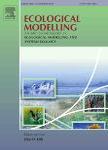版权所有:内蒙古大学图书馆 技术提供:维普资讯• 智图
内蒙古自治区呼和浩特市赛罕区大学西街235号 邮编: 010021

作者机构:Shanghai Jiao Tong Univ Sch Oceanog Shanghai Peoples R China
出 版 物:《ECOLOGICAL MODELLING》 (生态模拟)
年 卷 期:2022年第474卷
核心收录:
学科分类:0710[理学-生物学] 07[理学] 09[农学] 0713[理学-生态学]
基 金:National Natural Science Foundation of China [52200199, 42276201] Shanghai Frontiers Science Center of Polar Science (SCOPS)
主 题:Marine phytoplankton Biophysical controls Bayesian inference Climate change Western North Pacific Process-based modeling
摘 要:Marine phytoplankton possess a key position in multiple ecological, biological, and environmental processes;therefore, constructing a systematic and comprehensive mechanistic understanding of the leading mechanisms and key biophysical drivers of phytoplankton dynamics is crucial for evaluating biophysical forcings and ecological responses. Here, we develop a process-based model to improve the characterization of controlling mechanisms and assess the relative importance of nutrients, light, temperature, and oceanic mixing for explaining chlorophyll-a variability in the western North Pacific Ocean. The model is calibrated using 20-year observational data of chlorophyll-a concentrations from 1993 to 2012 in a Bayesian framework to provide data-driven inference and a rigorous uncertainty quantification of important biophysical rates. The model ex-plains approximately 61% of the variability in chlorophyll-a. Our results, supported by cross-validation, show that the chlorophyll-a concentration is much more responsive to temperature variability than nutrients, light, or mixing. By synthesizing the effects of multiple nutrients (i.e., nitrogen, phosphorus, silica, and iron) on phyto-plankton dynamics, we find that iron and nitrogen largely determine the chlorophyll-a variability. Sensitivity analysis shows that future warming conditions with +3 degrees C change in temperature will impede phytoplankton production by 24% due to an intensified phytoplankton mortality impact. Our findings highlight the potential of deductive-and-inductive modeling approaches combining embedded biophysical mechanisms and probabilistic uncertainty quantification to effectively integrate and leverage sporadic ocean monitoring efforts and ultimately improve the marine water quality predictions.